
前波画廊诚挚地宣布将于2018年6月16日起举办由唐冠科博士策划的群展《心境》,参展艺术家包括尚扬、王川和严善錞。严善錞(生于1957年)从浙江美院毕业后于1982年移居武汉继续深造学业,自那时起他便结识了尚扬(出生于1943年)。严善錞与王川(出生于1953年)初次见面是1998年邀请他参加首届深圳国际水墨双年展,但之后有一段时间没有来往,直到2005-2006年王川去深圳画院做驻地艺术家,而严善錞从1993年开始就在画院执教,重逢后他们便保持了频繁的联系。
三位艺术家分别出生于上世纪40、50年代,在80年代早期毕业后各自走向了不同的职业生涯,并以不同的方式回应了85美术新潮。尽管当时尚扬并没有追求厦门达达的极端挑衅行为,但在80年代末和90年代初进入了一个系统性实验的创作阶段。1984年后,王川将创作重心放在了水墨上,他也是少数几个入选具有重大历史意义的1989年中国美术馆《中国现代艺术展》的水墨画家之一。在同一时期,严善錞则更为低调,将接下来的十年时间都专注于学术与理论研究之中。
中国当代艺术的发展受到了一些20世纪艺术家的影响,但很少有人会提到赛•托姆布雷的名字,然而碰巧尚扬、王川和严善錞都非常仰慕这位艺术家。严善錞和王川都在80年代中期时通过杂志上接触到了其作品。当王川第一次能够看到原作时就评价说:“明白了托姆布雷的过人之处。当时他已经去了意大利,听说他在纽约有点被人排斥,因为他的画太优雅、太抒情。”托姆布雷也是尚扬欣赏的众多艺术家之一,他第一次看见他的画就觉得:“完了,我正打算画那样的作品,但是托姆布雷已经画得太完美了”。
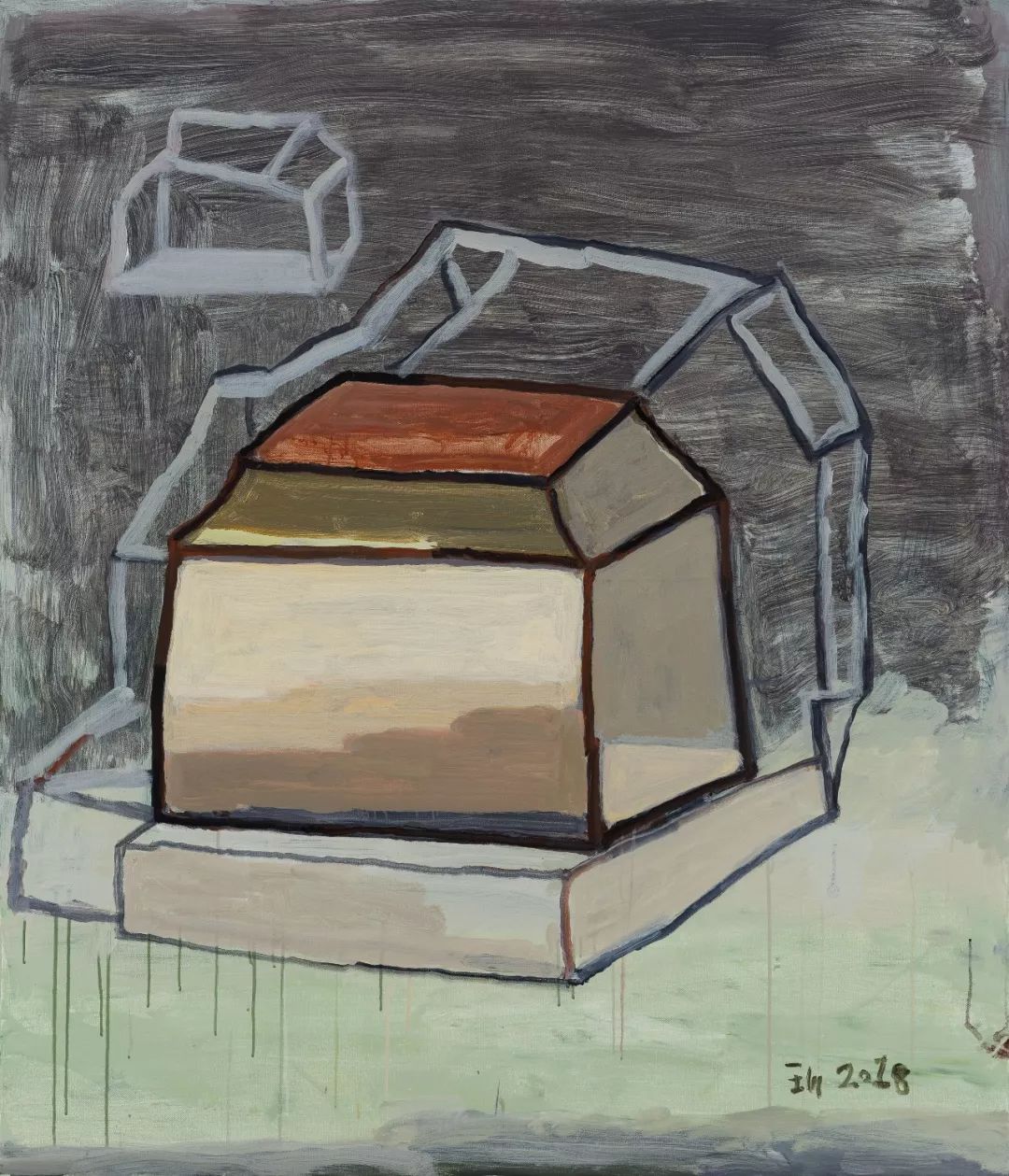
王川
盒子之一 2018 布面丙烯 120x 140 cm
毋庸置疑,赛•托姆布雷的影响已经在尚扬、王川和严善錞各自人生中的不同阶段,以不同的方式融入了他们的血液之中。这对王川的作品来说最为直接和明显,在经历了长时间的身体康复后,托姆布雷就好比是一根救命稻草,启发他通过增加各线条间关系的复杂程度来丰富其个人书法风格。近年来其创作题材以一种柔韧的、盒子般的形态为主,反映了他对佛教诸多方面的了解和思考:“我画的是一个盒子的概念,是一个空性的东西。人的大脑就像个垃圾箱,新闻、娱乐、八卦毫无选择地被吸收储藏进来。同样,他们也可以把这些垃圾再往外扔。我的盒子也就是这样一个箱子,观众可以把那些念头往里面塞。它可以是房子,可以是汽车,也可以是电脑、电视机、微波炉。这些画展出时,观众都向我述说过他们的各种观感,我觉得都没问题”。

严善錞
湖边 #16 2018 综合材料 213 x 153 cm
对严善錞而言,托姆布雷也从另一个不同的角度为他带来了启发。他仰慕托姆布雷深厚的文化底蕴,对古代与现代世界文学及视觉艺术的融会贯通,以及其作为一个当代画家将这些都融入到作品之中的能力。严善錞致力于探索杭州西湖在中华文明的历史长河中所代表的方方面面,虽然关注范围比托姆布雷要窄,但无疑在其最近的作品中他像托姆布雷一样奇迹般地融入了文学、视觉暗示及卓越的绘画创造力。在多重打磨过的石膏与颜料之下,画面中西湖本身及四周的著名景观恍如昙花一现,令人惊叹。
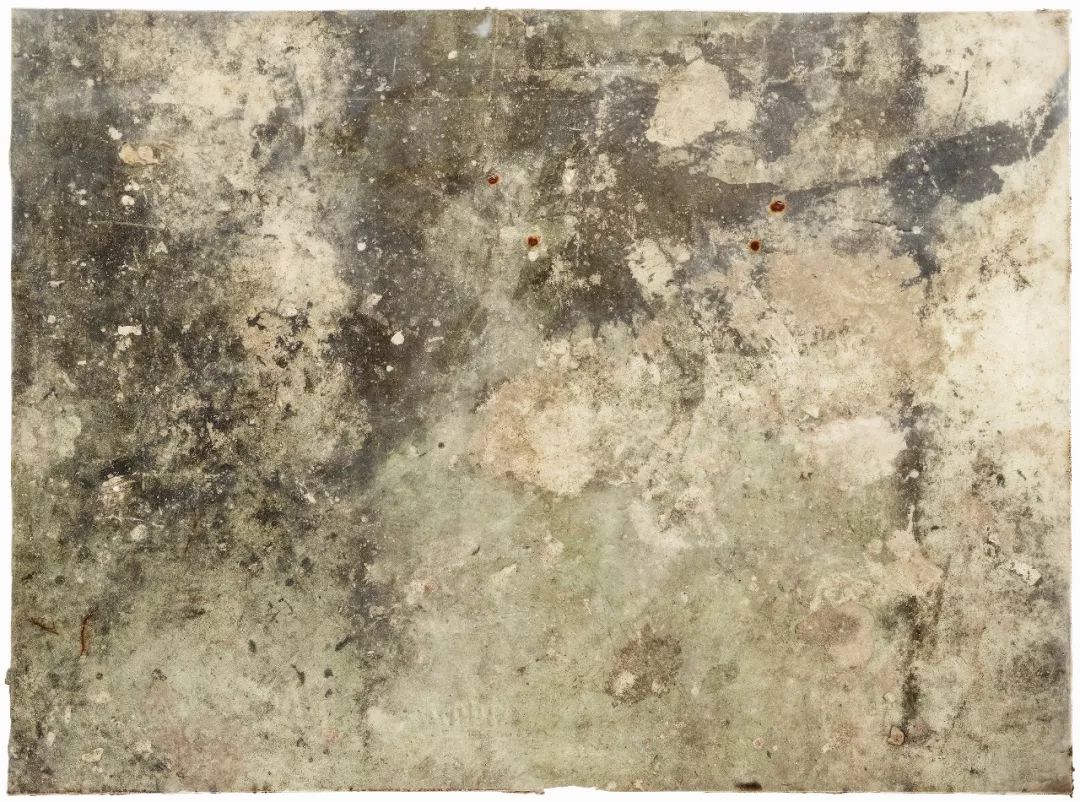
尚扬
白内障-切片 #4 2017 布面综合材料 169 x 230 cm
尚扬已到达了一个新作可以被称为“晚期风格”的人生阶段,经过数十年运用多种媒材的勤勉创作后,他变得更为放松,比以往任何时候都更听由作品媒材本身的引领,油画颜料也已经成为了次要角色。在漫长的艺术生涯中,他一直关注着塑造了人类社会又反被人类社会塑造的中国风景。他尝试过用各种不同方式来切入这个宏大的主题,然而从2002年起,他开始以明代书画家、理论家董其昌(1555-1635)为框架来继续探索这一主题。然而,如托姆布雷的作品一样,都日益体现出一种不屑在技巧上追求精益求精的态度,文化援引掩藏其中,这一点在《剩山图》(2011-2013)尤为明显。在一系列名为《白内障》(2017)的作品中,图像被去除了,创造与同时的毁灭行为之间的张力暗示了一种当代危机。作品Decaying(2018)的标题包含了作品主题,即画面中书写的文字,就像托姆布雷常常在绘画和纸本作品中用到维吉尔与俄耳甫斯的名字。
在总结赛•托姆布雷作品的关键特征时,艺评家柯克•瓦尔纳多写道:“在当代语境下翻译和重构过去,并以此坚持其现实性——或通过从一种‘语言’形式过渡到另一种形式来表达复杂含义——这是托姆布雷的追求。”这段描述也令我们洞悉到尚扬、王川和严善錞这三位艺术家对赛•托姆布雷的崇敬。
关于策展人唐冠科
唐冠科博士出生于伦敦,于1967年从剑桥大学唐宁学院获得硕士学位,并于1977年以对“奥古斯特·罗丹的雕塑”的学术研究从伦敦大学陶德艺术学院获得博士学位。1967年至1972年曾担任美国费城艺术博物的策展人及罗丹博物馆的馆长。之后在1972年至2008年间,在纽约苏富比任当代艺术部门总监、印象派及现代艺术部门总监,以及日本苏富比总裁。自2000年至今,唐冠科博士一直积极参与中国当代艺术的发展,成为了研究中国当代艺术的资深学者和策展人。他于2013年担任了尤伦斯当代艺术中心“杜尚与/或/在中国”展览的策展人,并与2015年为艾未未在伦敦皇家艺术学院的个展以及墨尔本维多利亚国家美术馆的”安迪·沃霍尔|艾未未“展览的画册贡献了重要文章。他于2015年开始担任剑桥大学Heong美术馆的学术董事顾问。

尚扬
白内障-不明物 2018 树脂 57 x 57 x 49 cm

王川
No.22018 纸本水墨 62 x 91 cm

严善錞
写生稿 01 2010 纸本综合材料 42 x 32 cm
Chambers Fine Art is pleased to announce the opening on June 16, 2018 of A State of Mind, curated by Dr. John Tancock. This exhibition will focus on art by Shang Yang, Wang Chuan and Yan Shanchun. Yan Shanchun (b. 1957) has known Shang Yang (b. 1943) since 1982 when he moved to Wuhan to continue his studies after graduating from the Zhejiang Academy of Fine Arts, Hangzhou. Yan Shanchun met Wang Chuan (b. 1953) for the first time when he invited him to participate in the First International Ink Painting Biennial of Shenzhen, 1998. Their relationship was interrupted for a time but in 2005 - 2006 Wang Chuan was artist-in-residence at the Shenzhen Fine Arts Institute with which Yan had been associated since1993 and they have been in frequent contact ever since.
Born in the 1940s and 1950s the three artists graduated in the early 1980s, each following a distinctive career path and responding in different ways to the ’85New Wave. Although not temperamentally disposed at the time to the most extreme provocations enacted by Xiamen Dada, Shang Yang entered a period of systematic experimentation at the end of the 1980s and early 1990s. After 1984 Wang Chuan focused primarily on ink-painting and was one of the few ink painters to be included in the historically important China Avant-Garde exhibition at the National Art Museum of China in Beijing in 1989. Meanwhile, Yan Shanchun kept alower profile during this period, concentrating on scholarly and theoretical studies for the next decade.
Among twentieth century artists whose work has been influential on the development of contemporary Chinese art the name of Cy Twombly is seldom mentioned but as it happens Shang Yang, Wang Chuan, and Yan Shanchun are all great admirers. Yan and Wang both discovered his work from magazines in the mid-1980s. When Wang was able to see actual paintings for the first time he has commented that he “came to understand how he surpassed all the others. By that point he had gone to Italy. I heard they looked down on him in New York, because his painting was too elegant, too emotional.” Twombly is also one of the numerous artists admired by Shang Yang who has noted that when he “first saw his paintings, I felt it was all over. It was my intention to paint like him but he did it so perfectly.”
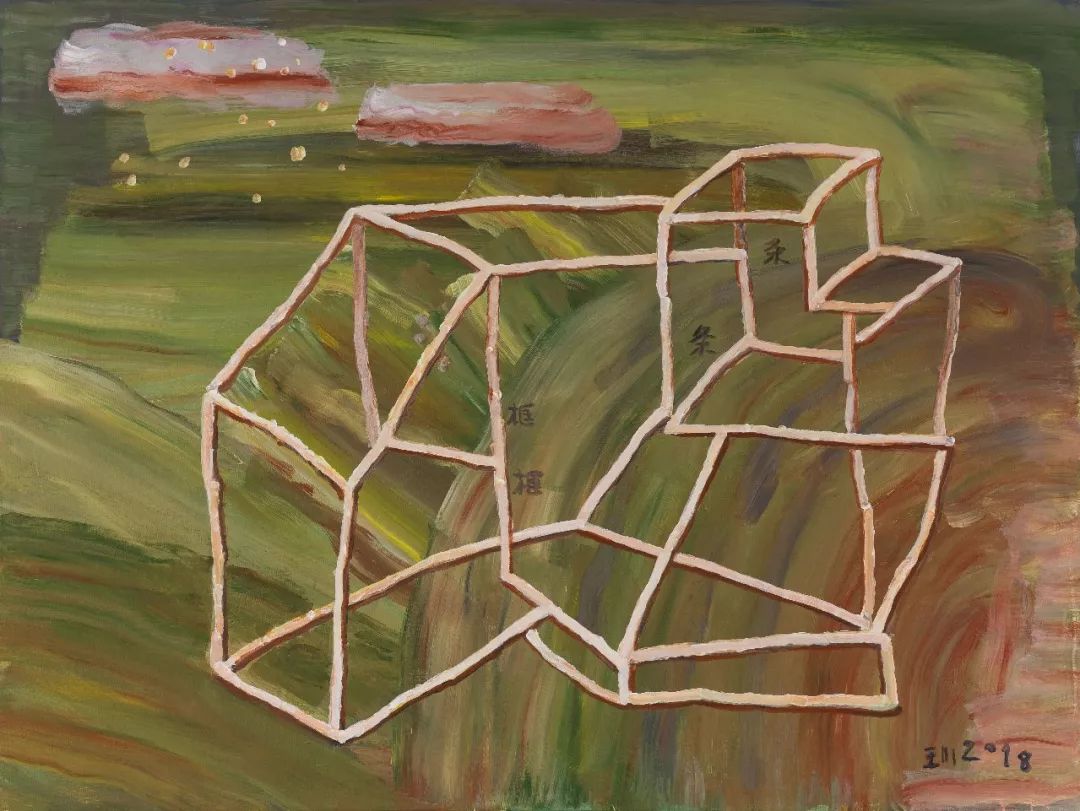
Wang Chuan
Box Series No.8 2018 Acrylic on canvas 150 x 200 cm
As has become apparent, Cy Twombly has entered the bloodstream of Shang Yang, Wang Chuan, and Yan Shanchun at different periods in their lives and in different ways. It is most immediately apparent in the work of Wang Chuan to whom Twombly seems to have been a kind of life-line after a long period of convalescence,offering him suggestions as to how his own calligraphic style might be enriched by increasing the complexity of the relationship between multiple linear force-lines. In recent years a pliable box-like form tends to dominate many of his paintings. Reflecting his familiarity with many aspects of Buddhist philosophy, he has commented that he is painting “the idea of a box, something empty. The human brain is like a trash-can, indiscriminately absorbing and storing news, entertainment and gossip. But in the same way this trash can be dumped out. My box is like this as well. Viewers can fill it with those notions. It can be a house, a car, a computer, a TV set or a microwave. When these paintings have been exhibited, the viewers all tell me their various perceptions, and I think they’re all fine.”

Yan Shanchun
Lakeside #19 2018 Mixed media 213 x 153 cm
For Yan Shanchun, also, Twombly is an inspiring example although for somewhat different reasons. He admires him for the depth of his culture, his easy familiarity with the literature and visual arts of the ancient and modern world and his ability to fuse this with his practice as a contemporary painter. Committed as he is to the exploration of everything that West Lake in Hangzhou has stood for in the history of Chinese civilization, Yan’s focus is much narrower than Twombly’s but there is no doubt that in his recent paintings he has accomplished a similar miraculous fusion of literary and visual allusions and remarkable painterly inventiveness. The lake and its famous landmarks appear only fleetingly through a scrim consisting of multiple layers of plaster and pigment.

Shang Yang
CataractNo.1 2017 Mixed media on canvas 180 x 74 cm
Shang Yang has reached the stage in life when his latest works might rightfully be described as a “late style,” the period when after years of conscientious production of works of art in many media he abandons all caution and listens more carefully than ever to the suggestions made by the materials with which he works, oil paint now only playing a subsidiary role. Throughout his long career he has been concerned with the landscape of China as it has shaped and been shaped by human society. He has approached this vast subject in many ways, but since 2002 the Ming dynasty painter and theoretician Dong Qichang (1555-1635) has provided a framework on which he has based his investigations. As with Twombly, however, the cultural references are masked beneath an apparent disdain for technical finesse that has become increasingly apparent, notably in the works that followed Remnant Mountain (2011-2013). Imagery has been banished from the series of works titled Cataract (2017), the uneasy tension between the act of creating and simultaneous destruction evoking a contemporary crisis. Decaying (2018) encapsulates its theme in the written word in the same way that Twombly frequently isolates the names of Virgil or Orpheus in paintings and works on paper.
Summarizing the defining characteristic of Cy Twombly’s oeuvre, Kirk Varnedoe wrote that “the act of translation, of reconceiving the past in contemporary terms and by this traduction insisting on its presentness – or in general of crossing over from one form of “language” to another to capture complex meanings – has been central to [Twombly’s] pursuits.” This deion offers an insight into the affinity that Shang Yang,Wang Chuan, and Yan Shanchun feel for Cy Twombly.
About the curator John Tancock
John Tancock received his M.A from Downing College, Cambridge in 1967 and his Ph. D from the Courtauld Institute,University of London in 1977 for “The Sculpture of Auguste Rodin.” From 1967 to1972 he was Associate Curator at the Philadelphia Museum of Art and Curator of the Rodin Museum. During his subsequent career at Sotheby’s he specialized in European Impressionist and Modern paintings. Since 2000, he has concentrated on contemporary Chinese art and is active as scholar and curator. He was co-curator of Duchamp and/or/in China at the Ullens Center of Contemporary Art (UCCA) in Beijing in 2013 and in 2015 contributed essays on Ai Weiwei to the catalogues of the Ai Weiwei exhibition at the Royal Academy of Arts, London and Andy Warhol – Ai Weiwei at the National Gallery of Victoria, Melbourne. In 2015, he joined the Advisory Board at the new created Heong Gallery at Downing College, Cambridge.
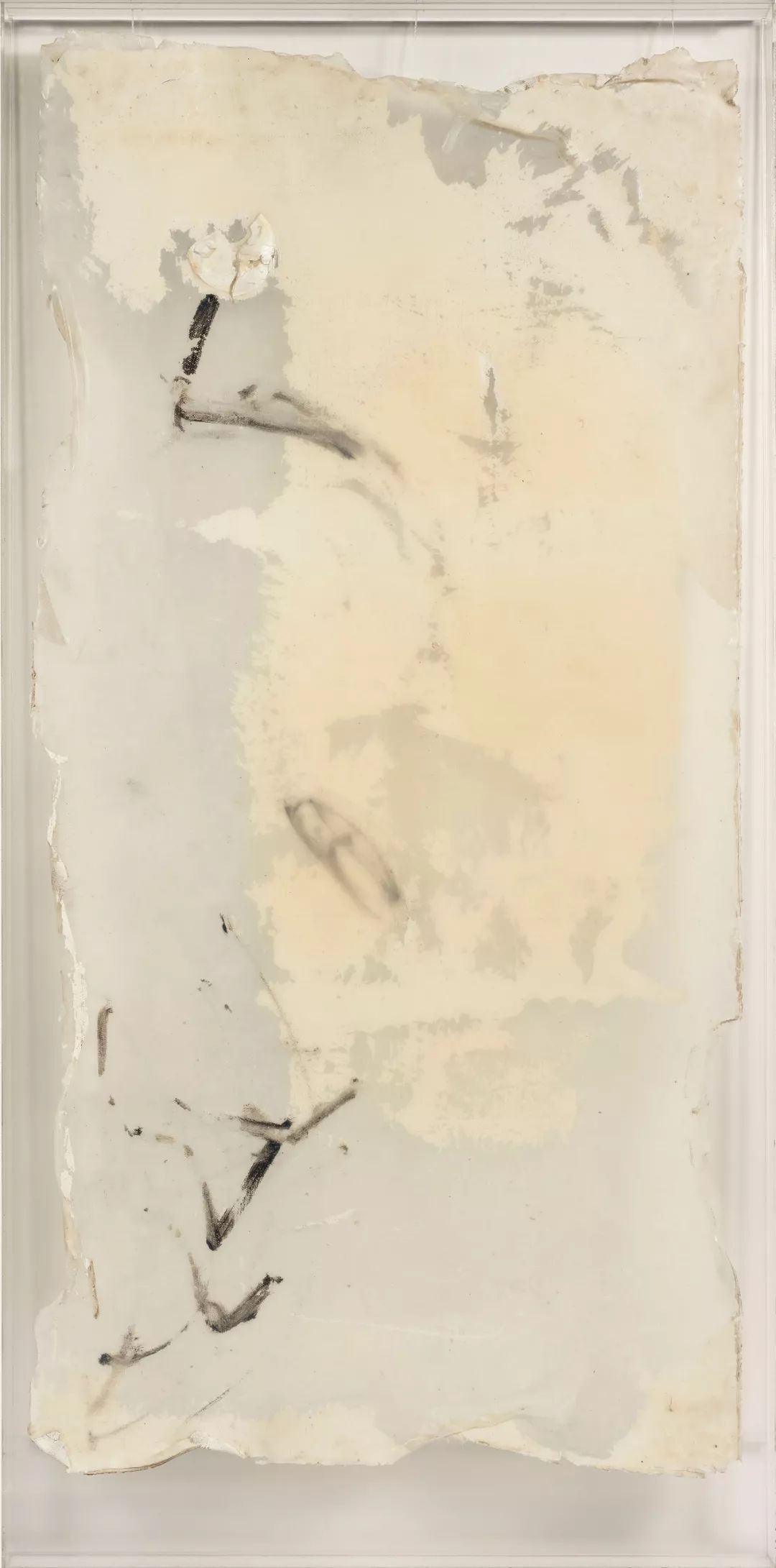
Shang Yang
Cataract No.4 2017 Mixed media on canvas 184 x 92 cm
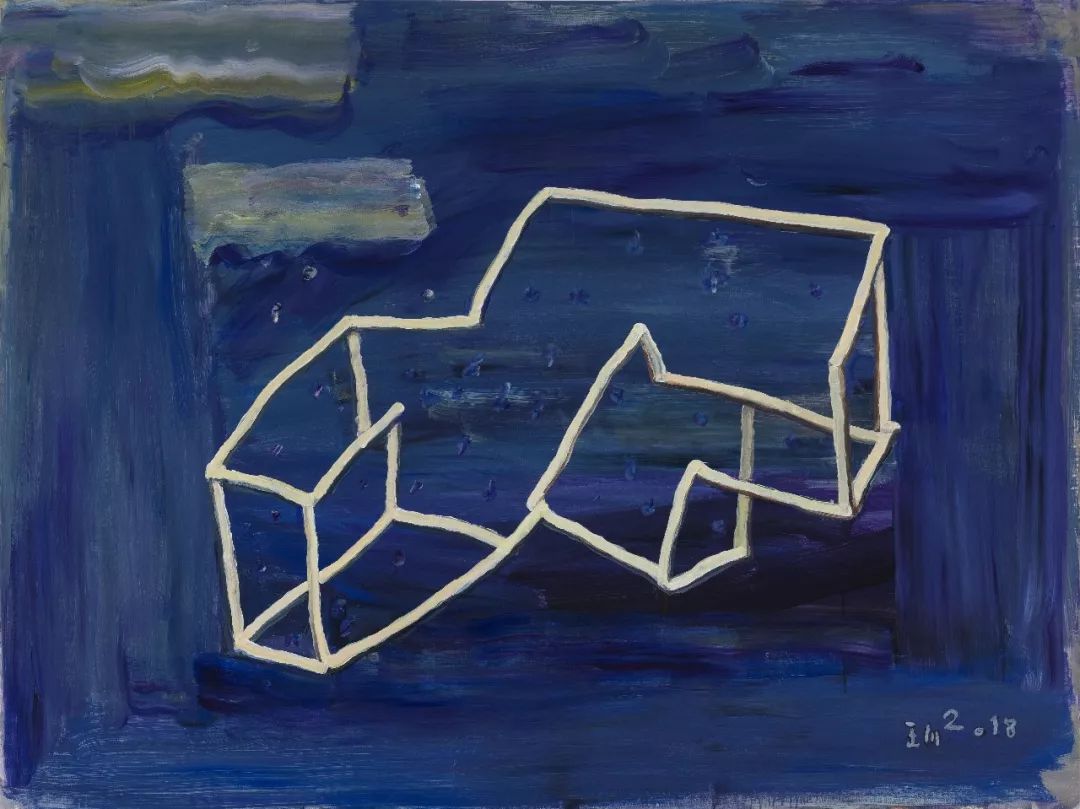
Wang Chuan
Box Series No.7 2018 Acrylic on canvas 150 x 200 cm
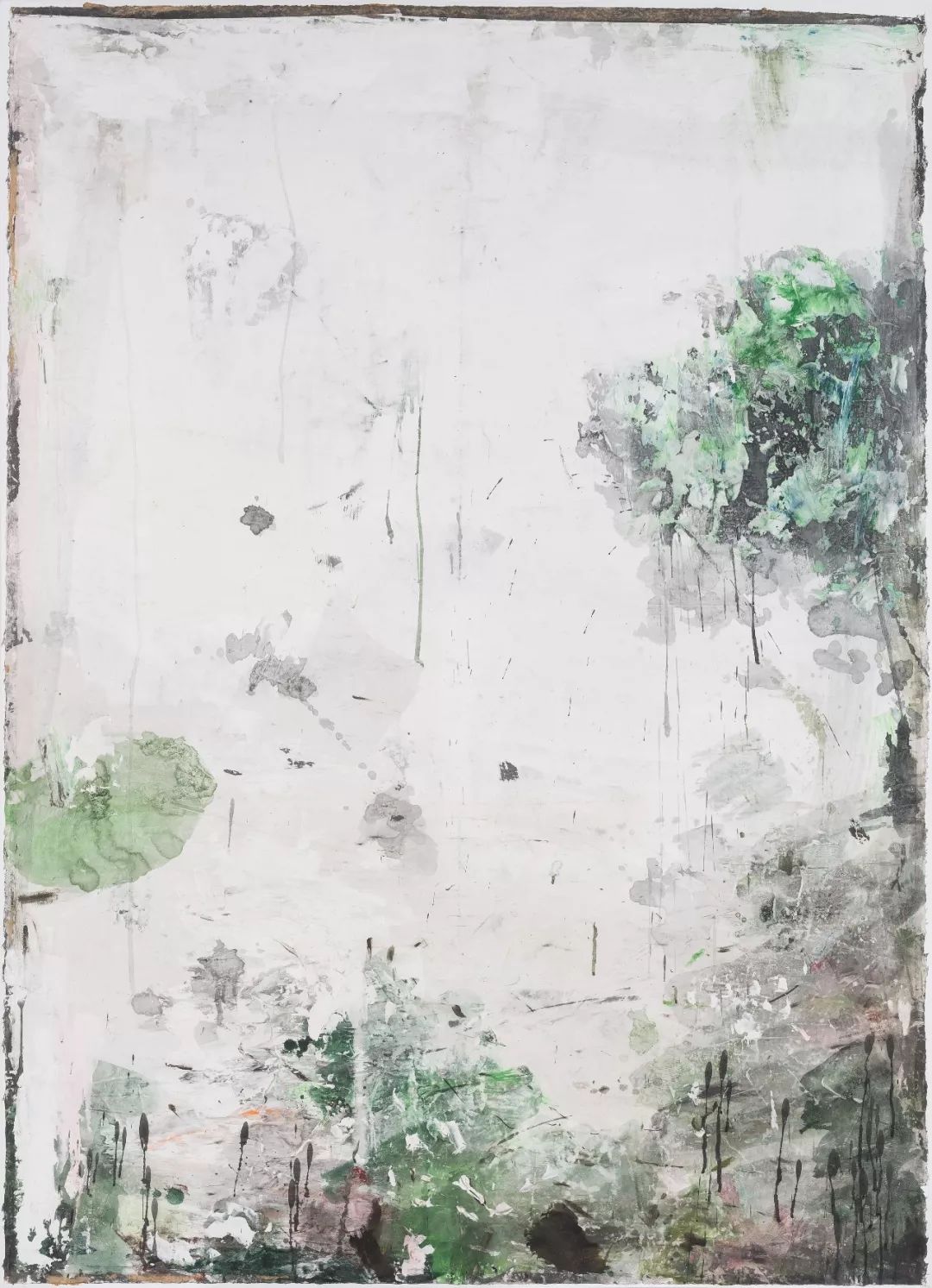
Yan Shanchun
Lakeside #21 2018 Mixed media 213 x 153 cm


